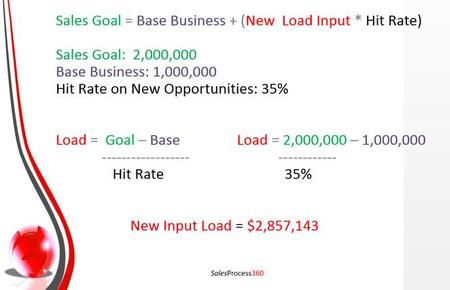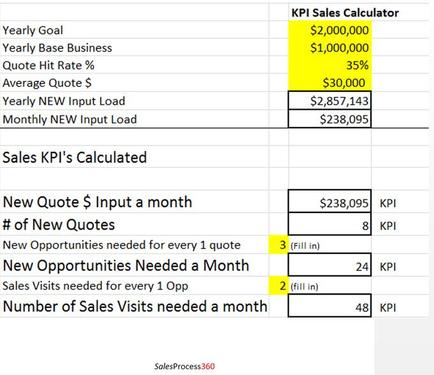Read the previous article in this series on developing competitive advantage: 1 + 1 = 4 – Team Selling is the Answer
What is your competitive advantage? No, really! What is your competitive edge? Sounds like a simple question, and when asked, most distributors, reps and manufacturers answer pretty quickly and predictably. If your goal is to excel in a competitive market, continuous attention to systems, methods, and processes that offer a competitive edge is essential. This series of articles focuses on areas proven to give companies a real competitive edge, yielding measurable results. These methods and processes must be things you and your team can focus on – and control – internally. Excuses related to external factors such as the economy and industry softness need not apply.
The topic for this article is KPIs for ROIs: Sales-Focused KPIs.
First off, what are KPIs? Key Performance Indicators. Everyone is trying to get their arms around the KPIs in their businesses. Sales-focused KPIs are those that I find most companies are not focused on.
I am sure you have heard this many times: Sales is a numbers game. Think of sales focused KPIs as the leading indicators that can give you a window into what the future sales numbers will look like. If you want to effectively manage your sales team and help them grow the business, increase revenue and have a competitive edge over their competitors you need to determine the KPIs that will help your team and allow you to quickly and easily know how they are doing. I think of Sales KPIs as a scorecard.
The key word here is sales. What I find is most companies are focused on what I call back-end KPIs. Let’s do a quick dive into this. Back-end focused KPIs means the companies are looking at the numbers that describe the order and invoicing side of the business. Here are some examples of back-end focused KPIs:
- Average days payable
- Inventory turns
- Booking this month
- Invoicing this month
When the controller at your company says your average days payable has been around 50 days you know instantly whether that is good or bad. You have set sales goals, and when it is said our bookings this past month were $1,500,000, you know whether this is good or bad. These are typically the types of KPIs that are being used inside companies today. They have become ingrained in the culture within your company and are known and easily graded as good or bad by everyone on the team.
So what are some sales-focused KPIs that you could make part of the company culture? I have broken these down to the ones I believe are easily managed and can provide a leading indicator for future sales.
Sales-Focused KPIs:
- Number of sales visits
- Number of new leads
- Number of new qualified opportunities
- Number of new quotes
- Open quote dollars (pipeline)
- Overdue quotes
Let’s go through an exercise to establish some sales KPIs in your company.
Start with calculating the Load Input for the sales KPIs. Here is the formula for calculating this along with an example.

You can use the formula (Sales Goal = Base Business + (New Load Input) * Hit Rate) for the company, each salesperson, branch, product, industry, etc.
In this example we have come up with the New Input Load we need each month to reach our sales goal: $2,857,143. Now that we have this number we can determine the best sales KPIs.
Consider the sales process:
Sales Visits > Opportunities > Quotes > Orders
Let set the KPIs for each. The highlighted areas below are the inputs.
This KPI Sales Calculator above can be downloaded here.
In this example your KPIs are:
- 48 sales visits
- 24 qualified opportunities
- 8 quotes
- $238,095 quote dollars
There are other sales-focused KPIs out there, but what I have found is keeping your eyes on those is where the ROI is. It is also simple and easy for your team to understand. As I stated earlier, I call these your leading indicators. Use this formula and have your sales team create their own KPIs. After they have established their KPIs, be sure to put in place a system to monitor performance. Create a simple scorecard to track these KPIs. I am a big believer of “in sight – in mind, out of sight – out of mind.”
Here is a simple Scorecard using Excel to track and monitor some of these KPIs against Load Input Goals.
A competitive edge for your team could be to put focus on Sales KPIs. Keep it simple with a way to measure and easily monitor the KPIs that can bring you ROI. Calculate your Load Input Goals and backfill to establish the number of sales visits, leads, opportunities, and quotes your team needs to identify every month. Look at this as your leading indicator for future business.
The takeaway: Get your sales team involved so they understand the value and reward of establishing, measuring and monitoring these KPIs. Create a simple KPI Scorecard and share with the team every month. This could give your team a competitive edge.
